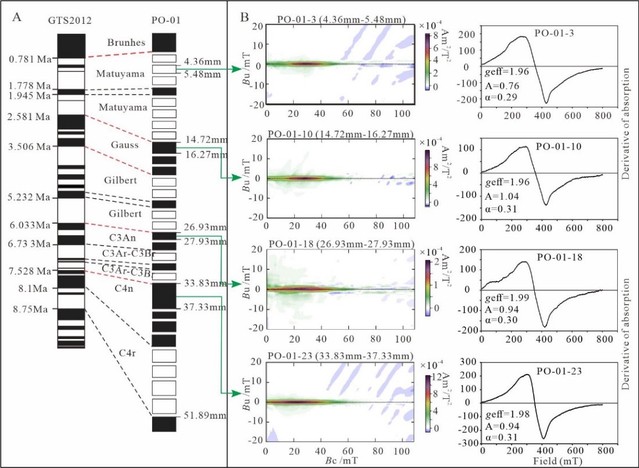Wei Yuana, Huaiyang Zhoua*, Zhenyu Yangb, James R. Heinc, Qunhui Yanga
a State Key Laboratory of Marine Geology, Tongji University, Shanghai 200092, China
b College of Resources, Environment and Tourism, Capital Normal University, Beijing 100048, China
c U.S. Geological Survey, Pacific Coastal & Marine Science Center, 2885 Mission St, Santa Cruz, CA 95060, USA
Abstract:
Records of natural remanent magnetization (NRM) and geomagnetic polarity reversals preserved within ferromanganese (Fe-Mn) crusts, together with the application of fine-resolution magnetostratigraphic analysis, have been successfully demonstrated. However, as Fe-bearing precipitates or minerals are thought to be either oxides/hydroxides precipitated from ambient oxic seawater, or detrital minerals, the magnetic properties of the ferromagnetic minerals and the genetic mechanisms remain controversial; moreover, the origin of the NRM is unclear. Here, we show that nanometer-scale magnetite crystals found in Fe-Mn crusts from the Pacific Ocean and South China Sea are magnetosome fossils based on their narrow size range, chain arrangement, chemical purity, and crystallographic perfection, as indicated by transmission electron microscopy (TEM). Furthermore, our new data of rock magnetic and electron paramagnetic resonance analyses, combined with a previously reported micro-magnetostratigraphic sequence, indicate that the magnetotactic bacteria (MTB) and their post-mortem remains contribute to a biogeochemical remanent magnetization (BRM) of Fe-Mn crusts. In addition, the results provide evidence for a previously unappreciated pathway for the biogeochemical cycling of iron in the deep ocean.
Full article:https://doi.org/10.1130/G46881.1



